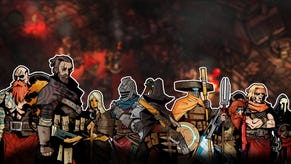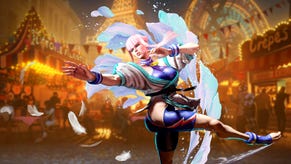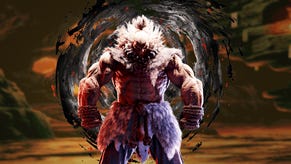1983: The Summer That Changed the World
30 years ago Nintendo, Sega, and Microsoft entered the Japanese console race. In doing so, they reshaped the future of games.
This article first appeared on USgamer, a partner publication of VG247. Some content, such as this article, has been migrated to VG247 for posterity after USgamer's closure - but it has not been edited or further vetted by the VG247 team.
By 1983, the American console industry had begun its quick, devastating implosion. But the arrival of three Japanese gaming systems wouldn't just shake up that country's nascent home industry -- it would eventually resuscitate the moribund U.S. industry. Throughout this month, USgamer will look back at this pivotal summer in a series of retrospectives.
- The Most Essential MSX Games
- SG-1000's Key Titles
- Early Famicom Classics
- Why Did Atari Fail in Japan?
- Nintendo Gets Into the Game
- Sega's Home Debut
- MSX: The Hybrid That Could
- The Famicom Legacy
At the end of 1982, things were not looking good for the U.S. video games industry.
Perhaps no single issue better symbolized the travails of the U.S. console business than the looming ouster of Atari Inc. president Ray Kassar. After more than five years at the helm of the company that essentially invented the console market, Kassar found himself under intense pressure. These stemmed in part from his alleged misdeeds: He had dumped thousands of shares of stock for Atari's parent company Warner Communications shortly before the entertainment giant reported shockingly poor financial results for 1982 on the back of a massive revenue shortfall for Atari. Stock market shenanigans may have been all the rage in Gordon Gekko's '80s, but Warner was having none of it.

Factored together with Atari's massive 1982 revenue shortfall (which undermined the Warner conglomerate's overall revenues for the year), Kassar found himself persona non grata. "They tried to blame me for the E.T. fiasco," Kassar lamented to Tristan Donovan, author of Replay: The History of Video Games. "Somebody had to be the fall guy and it wasn't going to be Steve [Ross]; he was the chairman of Warner. I was just chairman of one of their subsidiaries. So you know, somebody had to be the fall guy and it was me."
Kassar went quiet into that good night, and Warner began looking for a way to cut its losses on its investment in the troubled Atari, whose salad days had clearly come and gone.
Profit goeth before the fall
Just a few short years before, Atari had been the pride and joy of the Warner family. The Atari VCS (née 2600) sold millions of systems and several times as many game cartridges. It represented pure profit for Atari, which manufactured and distributed its own wares and paid the individuals responsible for inventing the games flat salaries, offering no royalties for their creative contributions. But that very same drive toward profits proved Atari's undoing when a number of disgruntled game designers walked out and established a new company dedicated to designing top-flight games and putting creators' names front and center: Activision.
Activision didn't simply represent a creative blow to Atari as its brain trust fled -- though Kassar infamously sniffed at their departure with disdain, telling Activision's founders, "You're not unique. Anyone can do a cartridge." Atari's coin-op division president at the time, Gene Lipkin, told InfoWorld magazine, "Ray has terrible people skills. Numbers were more important than people, it was profit at any expense." And the expense proved to be high, as Activision's departure and the legal wrangling that ensued eventually opened the door to for any number of other third parties to create games for Atari's system.


While Activision valued high quality and creative design through early masterpieces like Kaboom!, River Raid, and Pitfall!, other third parties lacked their inspiration's commitment to excellence. Soon, the U.S. games market was flooded with hundreds of games of wildly varying quality. With no rental market to turn to and no way to demo a game outside of lucking into a department store that happened to have a 2600 set up at its electronic counter, buying a game turned into a crapshoot. Even turning to familiar arcade favorites was no guarantee of quality, as Atari's own rushed, shoddy conversion of Namco's coin-op legend Pac-Man demonstrated.
The glut of poor software, the difficulty of the discovery process, and the uncertainty of an economy in recession caused the American console market to creak under the strain. The appearance of competitors Intellivision and ColecoVision didn't help, especially when the latter further muddied the waters by offering optional Atari compatibility. Sales foundered, retailers cut prices to clear games and stopped ordering new software, and suddenly all those third-party prospectors who hoped to cash in on the 2600 gold rush were shuttering their doors. The games fad had ended, and retailers had been burned badly enough that they were eager to wash their hands of the medium altogether. The console market had become a ghost town.
Meanwhile, in Japan...
Outside of the U.S., things weren't entirely different. Numerous competing standards vied for space in European and Japanese homes, but by and large these were limited to personal computers.
"Just as the U.S. saw lots of small companies sprout up to sell software on computers, the equivalent was going on in the PCs available at the time in Japan, even though they were all generally more expensive than their U.S. counterparts," says former 1UP and GamePro editor Kevin Gifford. "After that there was a huge market for for 'handy games' like the Game & Watch series, and after that were were consoles."
However, game consoles were a phenomenon largely localized to America at the time. "There wasn't much of a home console market," says Gifford. "Epoch's Cassette Vision de-facto monopolized that market in Japan from 1981 to 1983, and even that was chiefly because it was cheap compared to the imported competition."
"In America, there was a huge competition between the Atari 2600, Intellivision and Colecovision. There was no similar competition in Japan."
"Bandai had released the Super Vision 8000 in 1979, and Epoch released the Cassette Vision in 1981," says Kurt Kalata, editor of Hardcore Gaming 101 and The Guide to Classic Graphic Adventures. "Their libraries were extremely weak, with less than a dozen titles on either platform. Furthermore, home consoles at the time excelled due to arcade conversions, and, for the most part, the best either system could manage were rip-offs.
"In America, there was a huge competition between the Atari 2600, Intellivision and Colecovision. There was no similar competition in Japan. Epoch did attempt to compete with the Super Cassette Vision, with a fairly better selection of titles, but it still couldn't stack up."
"No clear mainstream winner had ever emerged from the clutter -- there was no Atari 2600 that became a must-own item for millions," says Wired Game|Life editor Chris Kohler. "Lots of people had videogame consoles in their homes, but everybody had something different. It could be an imported machine like an Atari or Intellivision or even a Vectrex, or it could be something homegrown like Epoch's Cassette Vision. What these platforms all had in common was that they all had only a handful of games. Nintendo, Sega and Microsoft all saw opportunities to establish a single standard."
The original homebrew
The world was a much larger place 30 years ago than it is today -- less interconnected. The Internet still existed almost entirely within the bounds of academia and the military; after all, people were still getting used to the concept of computers that didn't occupy an entire room. Perhaps not surprisingly, video games reflected this isolationism as well. American-made consoles and computers thrived in the U.S. (at least, until the console market crash), while the U.K. flocked to locally produced platforms like those from Acorn, Amstrad, and of course Sinclair's Spectrum line.
This was less a matter of nationalism or regional pride and boiled down to economics of scale. The games industry was far smaller 30 years ago than it is now, with success for a platform being measured in the low millions (the Atari 2600 managed 10 million units in five years). Manufacturing and distribution cost much more, exchange rates were all over the place, and many manufacturers did a poor job of localizing content for different regions. Few people bought imported systems because few people could afford them.

"The Intellivision's list price was 49,800 yen in 1982 [roughly $500 adjusted for inflation], and for that kind of money you were already well on your way to purchasing a computer," says Gifford. "The Atari 2800 was 24,800 yen in May 1983 and the Famicom was 14,800 yen in July, and the difference in quality between the two are pretty obvious."
"There was a definite opportunity for a Japanese manufacturer to bring home console technology to the next level at a price that importers like Mattel and Atari couldn't match," says Kohler, "and that thought is likely exactly what brought Hiroshi Yamauchi to launch the project that became the Famicom."
And so, as America's console market collapsed into itself under the strain of its own unchecked growth, Japan's game makers were only beginning to properly explore the potential of properly bringing arcade experiences home. In June and July 1983, three companies -- Nintendo, Sega, and Microsoft of Japan -- all arrived at roughly the same idea at roughly the same time, resulting in the near-simultaneous launch of three different platforms -- the Famicom, the SG-1000, and the MSX computer standard, respectively -- that would have a profound impact both at home and abroad. These systems would become incredibly popular in their homeland, and to various degrees their outward ripples would affect the rest of the world, too. In the coming weeks, we'll be looking back at each of these systems and the legacy they would leave behind.
Next: The Most Essential MSX Games








